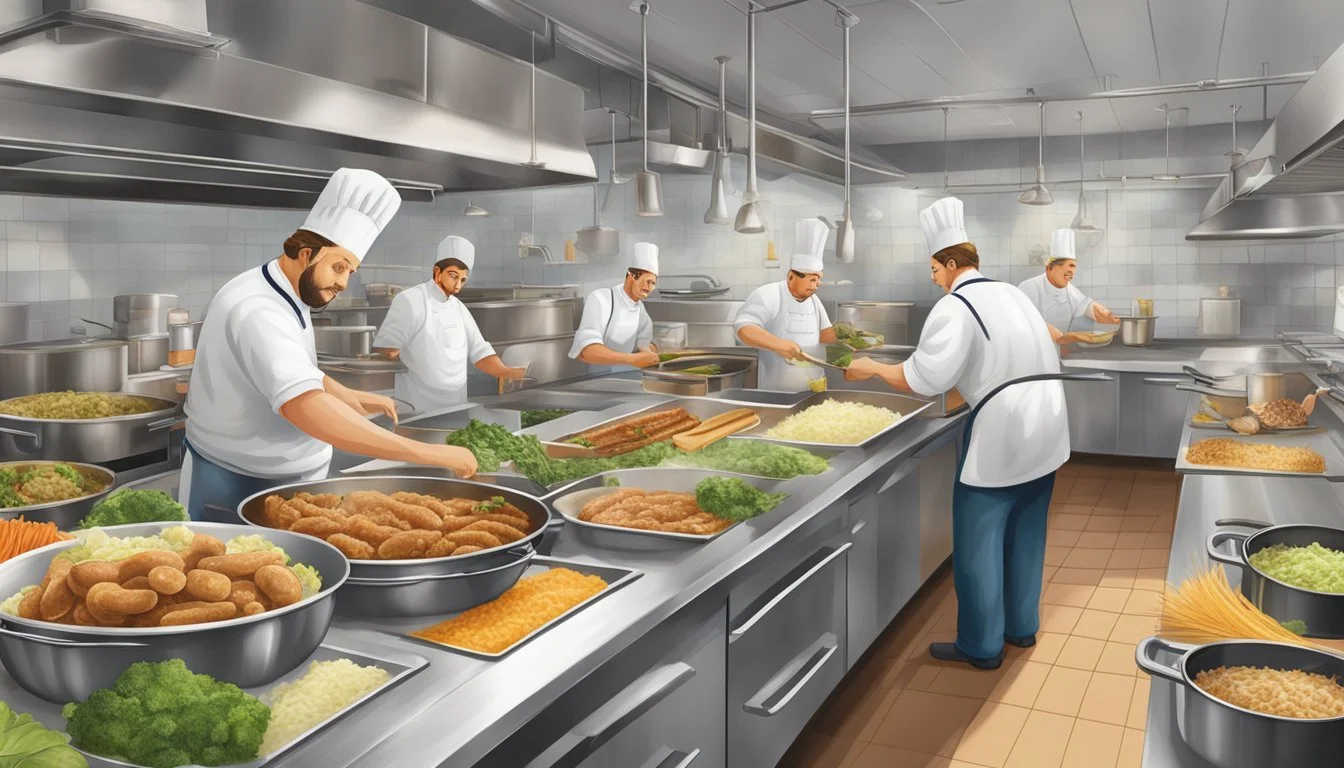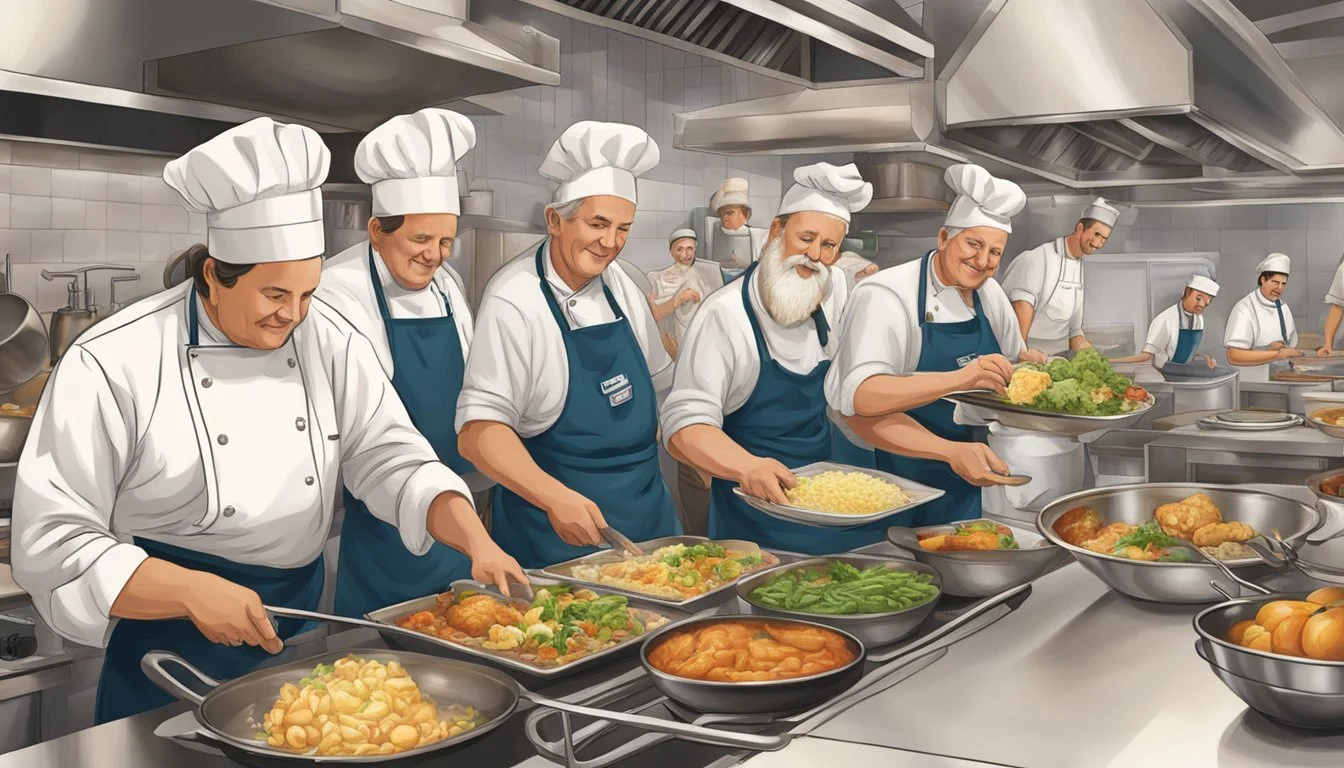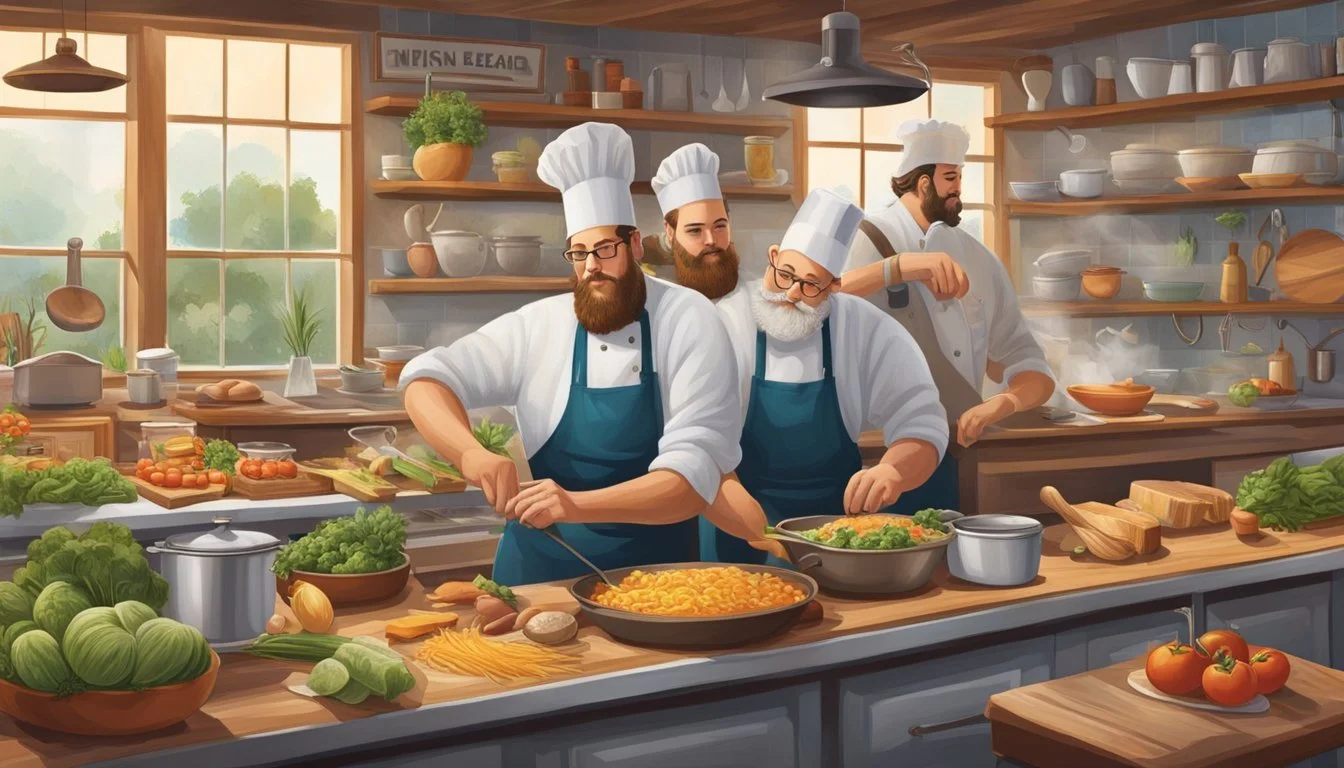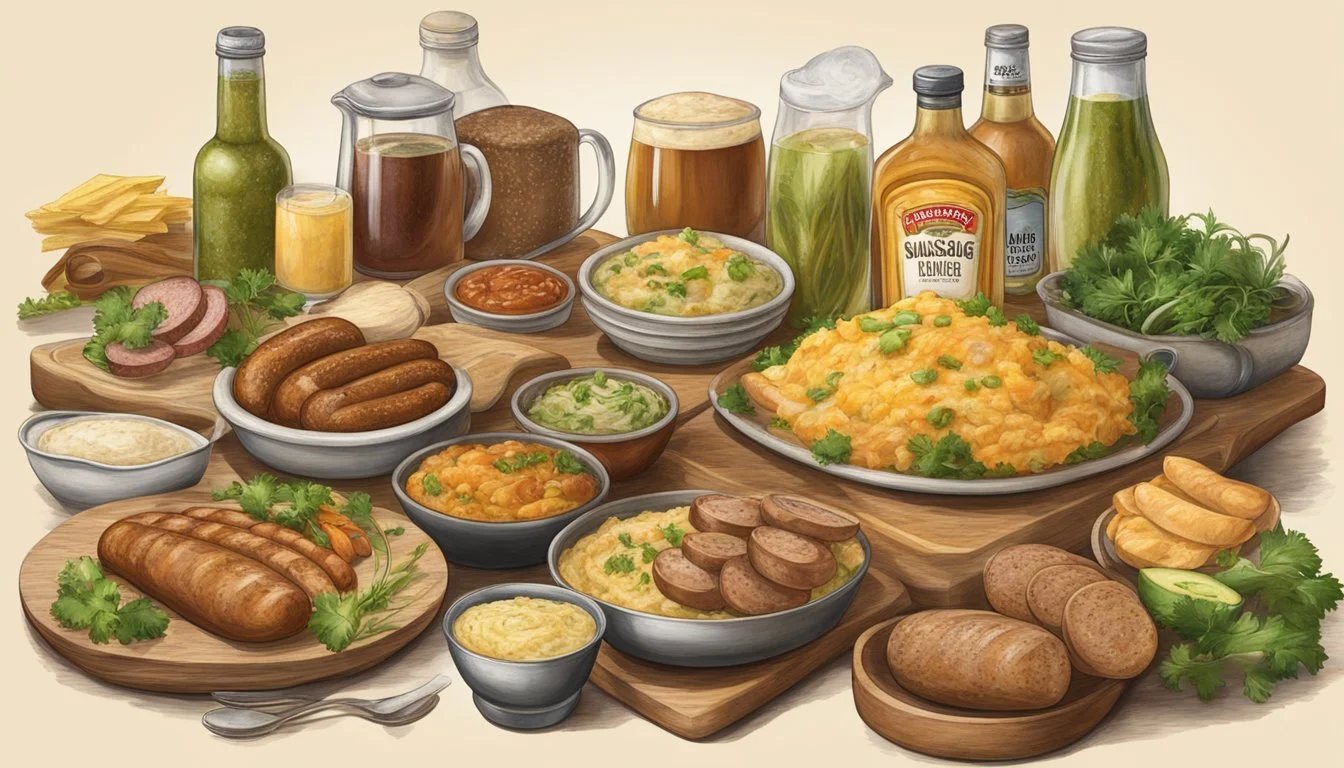German Texan Chefs
Shaping the Landscape of Texas Cuisine
Texas cuisine reflects a rich tapestry of cultural influences, among which German heritage has a prominent place. German immigrants brought their culinary traditions to Texas in the 19th century, setting a foundation for what would become a significant facet of the state's gastronomic identity. German Texan chefs have been pivotal in merging homeland recipes with Texan flavors, enhancing the local food scene with a fusion that honors both origins.
The contributions of German Texan chefs to the state's food can be seen in events like the Wurstfest in New Braunfels, a clear symbol of the lasting impact of German culture on Texan foodways. This festival, which attracts thousands of visitors annually, epitomizes the joyous celebration of German cuisine (What Wine Pairs Perfectly With German Cuisine), Texan style—with an emphasis on foods like sausage and beer, integral to both German and Texan festivities.
The legacy of these chefs stretches beyond festivals to everyday cuisine, as German-inspired dishes such as schnitzel have been adopted and adapted in Texas kitchens. Thanks to the influence of German immigrants and culinary creatives, Texas boasts a diverse culinary landscape where traditional German flavors often intermingle with the bold tastes characteristic of the Southwest, illustrating the state's enduring spirit of culinary inclusivity and innovation.
History of German Influence in Texas
The German influence in Texas has profoundly shaped the state's culture and cuisine, with impacts stemming from early immigration and persisting through generations.
Early German Settlers in Texas
German settlers began arriving in Texas during the 1830s, seeking opportunities in the ample and fertile Texas land. By the 1850s, the German-born population in Texas had doubled, with 20,000 residents by the end of the decade. They established prominent settlements, like New Braunfels and Fredericksburg, in the Texas Hill Country. These early settlers brought with them their German heritage, including language, customs, and food traditions which were soon to become a staple of Texan culture.
The Evolution of Texas Cuisine
The lasting mark of German settlers in Texas is evident in its diverse cuisine. Sausage-making, initially introduced by these European immigrants, evolved into an iconic element of Texan food. Over time, traditional German recipes were adapted by incorporating local ingredients and Texan culinary practices. This melding of cultures created a unique culinary identity, giving rise to famous Texan dishes that feature German roots, while maintaining a distinctly Texan flavor profile.
German Contributions to Texan Food Culture
The culinary landscape of Texas reflects a profound German influence, particularly through a unique fusion of cooking techniques, incorporation of hearty ingredients, and the adaptation of signature dishes that have become staples in the state's food culture.
Fusion of German and Texan Culinary Practices
German culinary practices significantly shaped Texan cuisine by integrating traditional cooking methods with Texas's own style. In particular, German methods of smoking and curing meat merged with Texan barbecue (What wine goes well with barbecue?) techniques to create distinctive flavors. Texas barbecue now often includes methods reminiscent of those seen in German butcheries and smokehouses, reflecting a marriage between German precision in meat preparation and Texan love for slow-cooked, smoky flavors.
Iconic German-Texan Dishes
German settlers in Texas introduced a range of dishes that have become iconic within the state's culinary repertoire. Among these are sausages like bratwurst, which Texans often enjoy in barbecue settings, alongside native beef cuts. These German sausages are now a fixture at Texas cookouts, flavored with a blend of spices, garlic, and sometimes beer. Another contribution is schnitzel, a breaded and fried meat cutlet, which has inspired similar preparations of chicken-fried steak, a beloved Texan comfort food.
Ingredient Integration in Texas Cuisine
German influences are evident in the ingredients integrated into Texan cuisine. Staples such as potatoes, onions, and garlic are foundational to many dishes, while sauerkraut and mustard have become go-to condiments in Texas, particularly as accompaniments for meats. The German tradition of pairing beer with food has also taken root in Texas, with many local breweries producing craft beers that complement the state's rich and hearty fare. Additionally, the use of peppers and spices—typical not only of German but also of Tex-Mex and traditional Mexican cuisine—highlights the diverse cultural influences that continue to evolve in Texas food culture.
Present-Day German-Texan Chefs
The culinary landscape of Texas continues to be shaped by influential German-Texan chefs who honor their roots while crafting modern takes on traditional dishes. This blend of historic flavors with contemporary presentation showcases the evolving yet enduring impact of German cuisine in Texas.
Influential German-Texan Chefs and Restaurateurs
Austin and San Antonio have become epicenters for innovative dining experiences rooted in German-Texan culinary heritage. Chefs in these cities are incorporating local ingredients like peppers and Texas beef into traditional German dishes. A notable chef in Austin has earned acclaim by reinventing the classic schnitzel, using locally-sourced meats and serving it with a side of zesty Texas-grown peppers. In San Antonio, another chef marries the flavors of Texas and Germany by stuffing kolaches with a mix of smoked meats (What wine goes well with smoked meats?) and chorizo, a nod to the state's love for bold flavors and barbecued foods.
Modern Interpretations of Traditional Dishes
At the crossroads of innovation, German-Texan chefs are remixing classic dishes with Texan twist. For example, a popular restaurant in the heart of Texas features a dish where bratwurst is paired with smoked brisket, creating a fusion that pays homage to both German and Texan barbecue traditions. These chefs often feature tacos filled with German-styled meat like bratwurst or schnitzel, seasoned with local spices, and sometimes embellished with a Texan barbecue sauce. Festivals across the state, like the famous Wurstfest in New Braunfels, celebrate these culinary integrations, drawing food enthusiasts eager to experience the unique flavors resulting from this cultural amalgamation.
Cultural and Civic Contributions
German-Texan chefs have been pivotal in celebrating and preserving their rich heritage through culinary expressions and community events.
German-Texan Festivals and Celebrations
German-Texan communities enthusiastically celebrate their cultural identity with an array of festivals. The most notable is Oktoberfest, hosted in cities like Fredericksburg. This annual event draws attention to the enduring German influence in Texas. It is a festive period when the aromas of traditional German cuisine fill the air, and the sounds of polka music and joyous dancing resonate through the streets. Commemorating this occasion serves both as a cultural exhibition and a tether maintaining the link to Bavarian customs.
Key festivals:
Fredericksburg Oktoberfest
New Braunfels Wurstfest
Educational endeavors are also woven into these events, where participants learn about German language and traditions, further solidifying the German-Texan identity.
Preservation of Heritage through Cuisine
German-Texan chefs play a crucial role in the preservation of their heritage through cuisine. They maintain traditional recipes and cooking methods that immigrants brought from Germany to Texas in the mid-19th century. By doing so, they ensure that dishes such as schnitzels, sausages, and strudels remain staples in Texan gastronomy. These culinary offerings are not just a means to sustain the German language and customs; they also offer a tangible link to the past for subsequent generations.
Traditional Dishes:
Sausages: Bratwurst, Knackwurst
Pastries: Strudel, Pretzels
Educational workshops and cooking classes hosted by these chefs further preserve and impart knowledge of their culinary heritage, both to fellow Texans and to visitors intrigued by the state's diverse food landscape.
Influence on Regional and Local Economies
German Texan chefs have had a significant and multifaceted impact on Texas' regional and local economies. They have contributed to the agriculture and livestock sectors, invigorated the restaurant and tourism industries, and enriched culinary education.
Agriculture and Livestock
German Texan chefs have nurtured a demand for local produce and livestock, echoing their culinary heritage which emphasizes quality and robust flavors. The demand for beef, veal, and pork has strengthened ties with Texas ranchers, fostering a resilient local agriculture industry that contributes substantially to the state’s economy. They also encourage the cultivation of specific crops that are central to German-inspired dishes, bolstering the region's agricultural diversity.
Restaurants and Tourism
Restaurants showcasing German Texan influences have become culinary destinations, drawing both locals and visitors who seek authentic dining experiences. These establishments often feature traditional German meats and bread, introducing diners to the fusion of Texan and German flavors. Such unique dining options enhance the tourism industry, encouraging culinary-focused travel and events within Texas.
Education and Culinary Schools
The legacy of German Texan chefs extends to educational contributions, influencing culinary schools and university programs across the state. As they share their expertise in traditional German cooking methods and Texas cuisine, they provide a distinctive curriculum that sets Texas culinary education apart. This knowledge transfer assists in cultivating future generations of chefs and preserves the German Texan culinary tradition.
Fusion with Other Texas Culinary Traditions
The culinary contributions of German Texan chefs have interwoven with various Texas food traditions to create a rich tapestry of flavors. They have influenced and merged with Tex-Mex, barbecue, and an array of European and Mexican elements, contributing to the state's diverse culinary profile.
Tex-Mex and German-Texan Fusion
In the realm of Tex-Mex, German influence is subtly present. For instance, beef, a staple in German cuisine, is central to Tex-Mex dishes such as fajitas and enchiladas. German settlers' methods of cooking and seasoning meats merged with Mexican spices like cumin and chili powder to enrich Tex-Mex flavors. Additionally, German Texan chefs have been known to use cheeses aligned with their culinary heritage, adding a unique twist to traditional Tex-Mex cheesy dishes.
Barbecue and Smoked Meat Traditions
Barbecue, especially smoked meats, is another area where German Texan chefs left a profound mark. The German tradition of smoked sausages has blended seamlessly with Texas’s own barbecue practices. They contributed techniques for smoking beef brisket, a cornerstone of Texas barbecue, enhancing its flavor and tenderness.
Incorporation of European and Mexican Elements
The fusion between German and Mexican cuisines is most evident in the use of certain food elements and spices. German cookies known as Lebkuchen, for example, share spices such as cinnamon and clove commonly found in Mexican cuisine. This cross-cultural exchange has led to the creation of hybrid dishes that feature German baking techniques with Mexican flavors. Furthermore, enchiladas and tamales have been adapted by German Texan chefs who incorporate European flavors into these iconic Mexican dishes, reflecting the broader culinary fusion that is synonymous with Texas.
Future Trends in German-Texan Cuisine
The culinary landscape in Texas has always been a melting pot of flavors, and German-Texan chefs play a vital role in shaping its future. These chefs, with their profound respect for culinary heritage, are at the forefront of blending traditional German techniques with Texas's bold flavors. This innovative approach is expected to continue spearheading new trends in Texas cuisine.
Innovation and Fusion
Smoked meats, a staple in Texan barbecues, might find new dimensions with German spices and preparation methods. German-Texan chefs could explore incorporating juniper or caraway seeds, elevating familiar cuts of meat with distinct European flavors. Moreover, plant-based adaptations of classics like bratwurst align with the growing health and environmental trends.
Cultural Dining Experience
The dining experience may also embrace a hybrid model, with German-Texan restaurants creating immersive environments that reflect both cultures. Fusion events and festivals are likely to gain popularity, celebrating the culinary symbiosis on a grand scale.
Trends in Tex-Mex
The influence on Tex-Mex might see a rise in dishes like sauerkraut enchiladas or spätzle with chili con carne. This cross-pollination of cuisines will cater to a diverse palate seeking novelty as well as comfort food.
Diversity in Ingredients
Meats: Beef, Pork, Chicken (experimented with German spices)
Vegetables: Cabbage, Potatoes, Roots
Herbs/Spices: Dill, Parsley, Mustard, Paprika
German-Texan chefs are anticipated to continue blending the robustness of Texas flavors with the finespun intricacies of German cuisine, creating a dining culture rich in diversity and innovation.
Socio-Cultural Impact
In Texas, the blending of German culinary traditions with local Texan ingredients has created a unique and enduring socio-cultural landscape. This fusion illustrates the importance of cuisine in both sustaining a cultural heritage and acting as a dynamic bridge between communities.
Cuisine as a Cultural Bridge
The integration of German cuisine into the Texan diet serves as a testament to the robust exchange of culture between German settlers and the Texan community. Sausages, pretzels, and schnitzel, for example, are now staples in many Texan restaurants, demonstrating the ability of food to connect diverse groups. Festivals like the Wurstfest in New Braunfels draw over 100,000 visitors, where the celebratory atmosphere underscores the important role that food plays in fostering social ties and celebrating German-American heritage.
Key German Contributions to Texan Cuisine:
Sausages: Varieties inspired by German recipes.
Pretzels: Original German snack adapted to Texan tastes.
Fried Chicken: European frying technique combined with southern flavors.
German-Texan Identity and Community
The sense of community and identity among German-Texans is solidified through culinary practices. Towns like New Braunfels and Fredericksburg have retained their Germanic essence by incorporating traditional foods and festivities into their social fabric. Through these activities, the German-Texan population maintains a connection to their ancestry while contributing to a more diverse Texan culture. Oktoberfest events are a clear expression of this, with their power to both preserve German heritage and strengthen the sense of community across Central Texas.
Community Events that Celebrate German-Texan Heritage:
Wurstfest: A 10-day celebration of German tradition in New Braunfels.
Oktoberfest: Annual festival held in various cities, including Austin, celebrating German culture.








